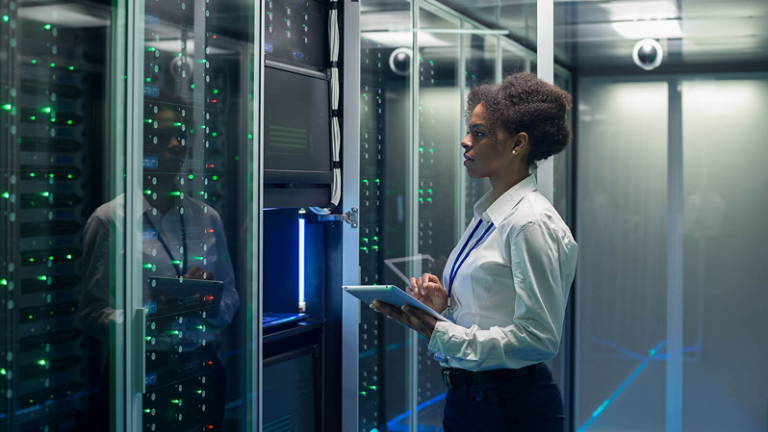Blog
Published: November 04, 2019
Energy Cost Saving Methods for Data Centers
When data centers want to reduce non-IT energy costs, there is no single solution. Many strategies come to mind, and the best one…depends. It depends on utility rate structures, local climate and natural resources, and on the type of IT equipment and how the center is laid out. Experienced HVAC system designers begin with energy efficient base equipment—and then we get creative. Many of the available solutions for reducing energy costs aren’t new, but we’re finding new ways to apply them to reduce the energy intensity of data centers.
Energy Cost Saving Methods for Data Centers
November 04, 2019

When data centers want to reduce non-IT energy costs, there is no single solution. Many strategies come to mind, and the best one…depends. It depends on utility rate structures, local climate and natural resources, and on the type of IT equipment and how the center is laid out. Experienced HVAC system designers begin with energy efficient base equipment—and then we get creative. Many of the available solutions for reducing energy costs aren’t new, but we’re finding new ways to apply them to reduce the energy intensity of data centers.
Here are four energy cost-saving strategies that are working for data centers.
- Adjust the temperature setting. ASHRAE® Technical Committee 9.9 published a book titled “Thermal Guidelines for Data Processing Environments.” Within this book they have provided a table of thermal guidelines for the equipment environment. The table contains recommended temperature and humidity ranges for the IT space. However, IT equipment companies are making products that tolerate conditions well above the recommended ranges. As such, the latest thermal guidelines have been expanded to include allowable temperature and humidity ranges that allow the equipment environment to operate at much higher temperatures. Raising the temperatures in the data center can result in significant energy savings. It’s important to work with the IT equipment provider and design and operate the HVAC system to the specific requirements of the data storage devices.
- Implement free cooling. Nature can provide “free” air conditioning in many parts of the world for a majority of the year. Free cooling systems bring cold outside air or water inside, using airside or waterside economizers, thereby reducing or even eliminating the need for mechanical refrigerant cooling. Free cooling doesn’t require an extremely cold climate; and paired with newer IT equipment that can operate at higher temperatures, it is becoming feasible in more places.
- Integrate thermal storage. Unlike a typical office building, data centers operate 24/7 and their load remains relatively constant. However, if there is a method of free cooling applied, oftentimes the HVAC load at night can be handled by the free cooling, even at the peak of the summer, and the mechanical cooling is used midday when temperatures are highest. For applications like this, thermal storage can be utilized, and the tanks charged at night when free cooling is meeting the HVAC loads. With this strategy, thermal storage can be used during the daytime peak, and the size of the mechanical equipment and the connected electrical load associated with it can be reduced.
- Finally, proper control is essential in the efficient and reliable operation of a data center. Oftentimes we see the HVAC equipment being controlled with generic automation systems and custom programmable logic. That is then tied into the data center infrastructure management system (DCIM) for monitoring. Manufacturers of HVAC equipment have spent decades refining the control of their equipment to provide optimal system efficiency and reliability. It is my opinion that nobody knows how to control equipment better than the one who makes it. Consider allowing the HVAC provider to supply the control of their equipment that can then be tied into the DCIM for remote monitoring.
With the right energy saving strategies in place, data centers can serve the world’s rapidly growing demand for data storage and processing profitably and sustainably.
